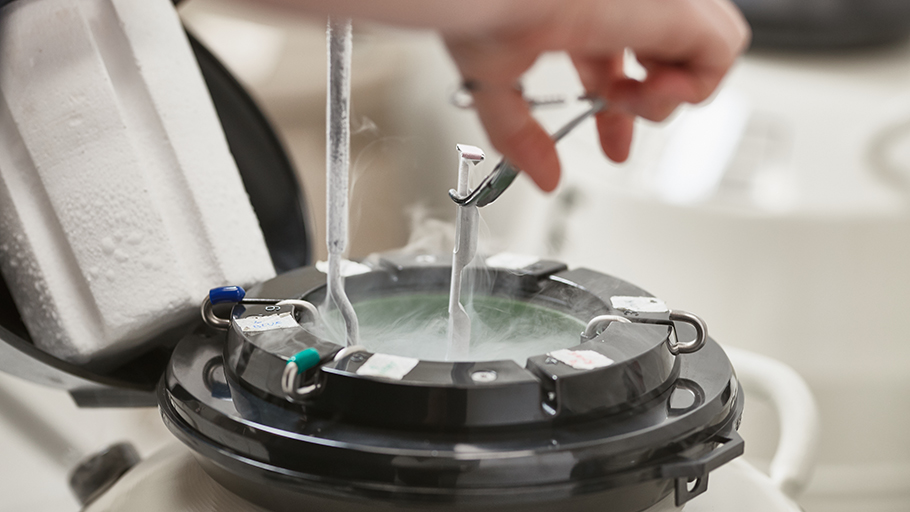Nowadays, freezing sperm in liquid nitrogen is the most effective method of preserving fertility in adult and adolescent males.
Cryopreservation of sperm or testicular tissue
Male fertility can be preserved for the future by sperm ‘cryopreservation’, or freezing the sperm. This may be done prior to starting chemotherapy or surgical treatment for cancer that could be damaging to the production of sperm.
Survival rates of many types of childhood and adolescent cancers have been steadily increasing, which allows fertility preservation to be become a part of cancer treatment in many cases. Fertilys also provides cryopreservation of testicular tissue for prepubertal boys diagnosed with cancer. (See the section on children)
As well, some transgender women may decide to preserve spermatozoa prior to gender-affirming treatment.
After puberty, the sperm sample is most commonly produced by masturbation and collected in a specimen container. This is ideally done onsite at Fertilys, in a private room, or in some cases can be produced at home and the specimen brought to the clinic without delay.
Before puberty, testicular tissue can be obtained surgically and then frozen for the future. The sperm is placed in carefully labeled straws, and stored in a tank of liquid nitrogen, at -196⁰C.
Using the thawed sperm
Sperm can remain frozen for many years (even decades) and later be used to conceive a healthy baby. There is no evidence that the amount of time the sperm stays frozen impacts its quality. However, sometimes sperm can be damaged during the freezing and thawing process, especially if the quality of the sperm is not optimal before cryopreservation.
After thawing the sperm sample, it can be used for conception by one of two methods: artificial insemination or in vitro fertilization. Artificial insemination involves placing the sperm into a woman’s uterus from the vagina with a small catheter. In vitro fertilization involves using the sperm to fertilize a woman`s egg in the laboratory to produce an embryo, and then transferring the embryo with a small catheter into the woman’s uterus.
The amount of sperm needed to achieve a pregnancy with artificial insemination is much more than is needed for in vitro fertilization.
